Nestled on the banks of Lake Nasser in the heart of the Nubian Desert lies one of Egypt’s most awe-inspiring treasures: the Temple of Ramses II in Abu Simbel. This magnificent temple complex, carved directly into the sandstone cliffs, stands as a testament to the power and grandeur of ancient Egypt’s pharaohs.
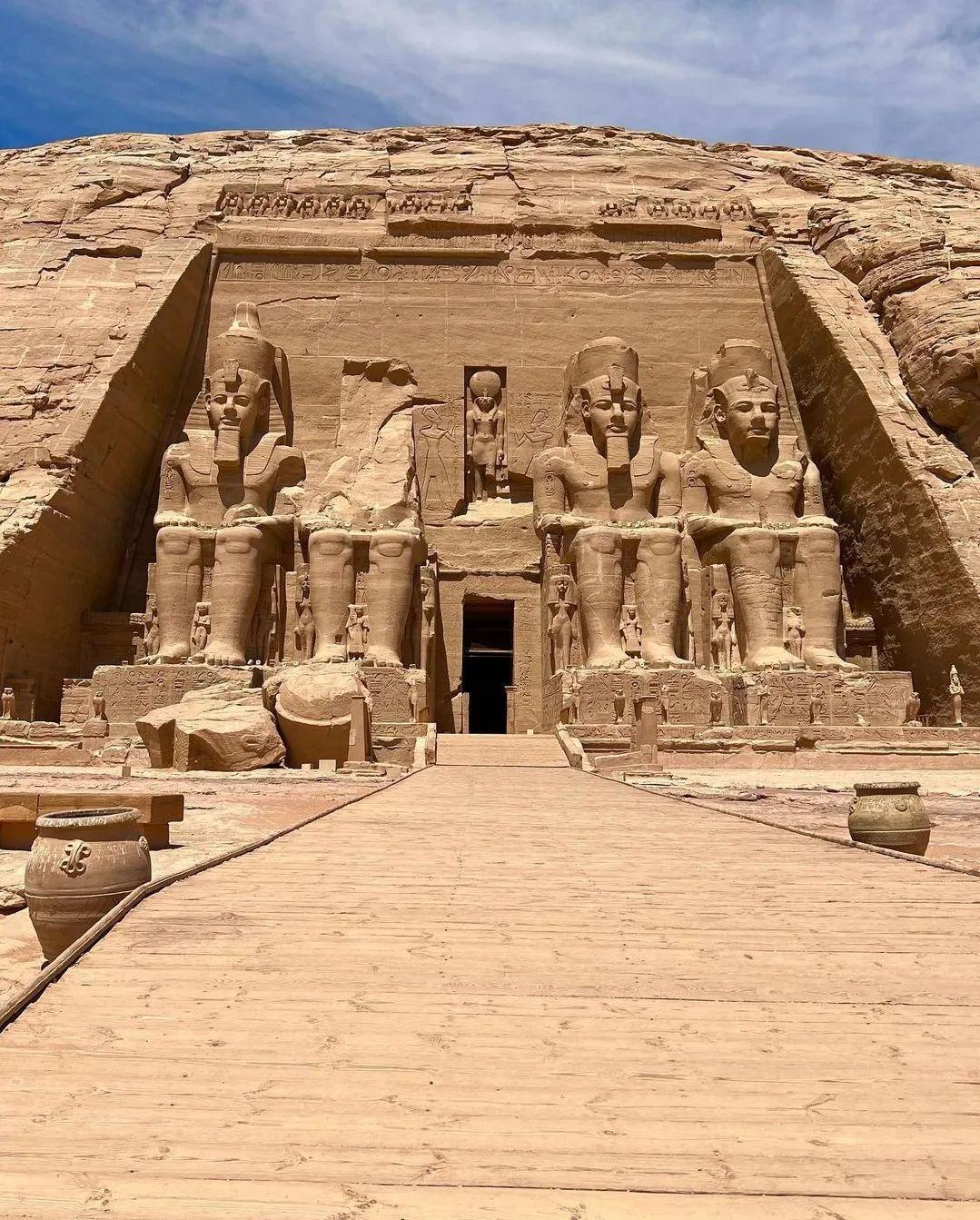
A Historical Marvel:
The Temple of Ramses II, also known as the Great Temple, was constructed during the reign of Pharaoh Ramses II, one of Egypt’s most celebrated rulers. It was built between 1274 and 1244 BCE, as a lasting tribute to the pharaoh’s greatness and as a symbol of his authority over Nubia, a region in southern Egypt and northern Sudan.
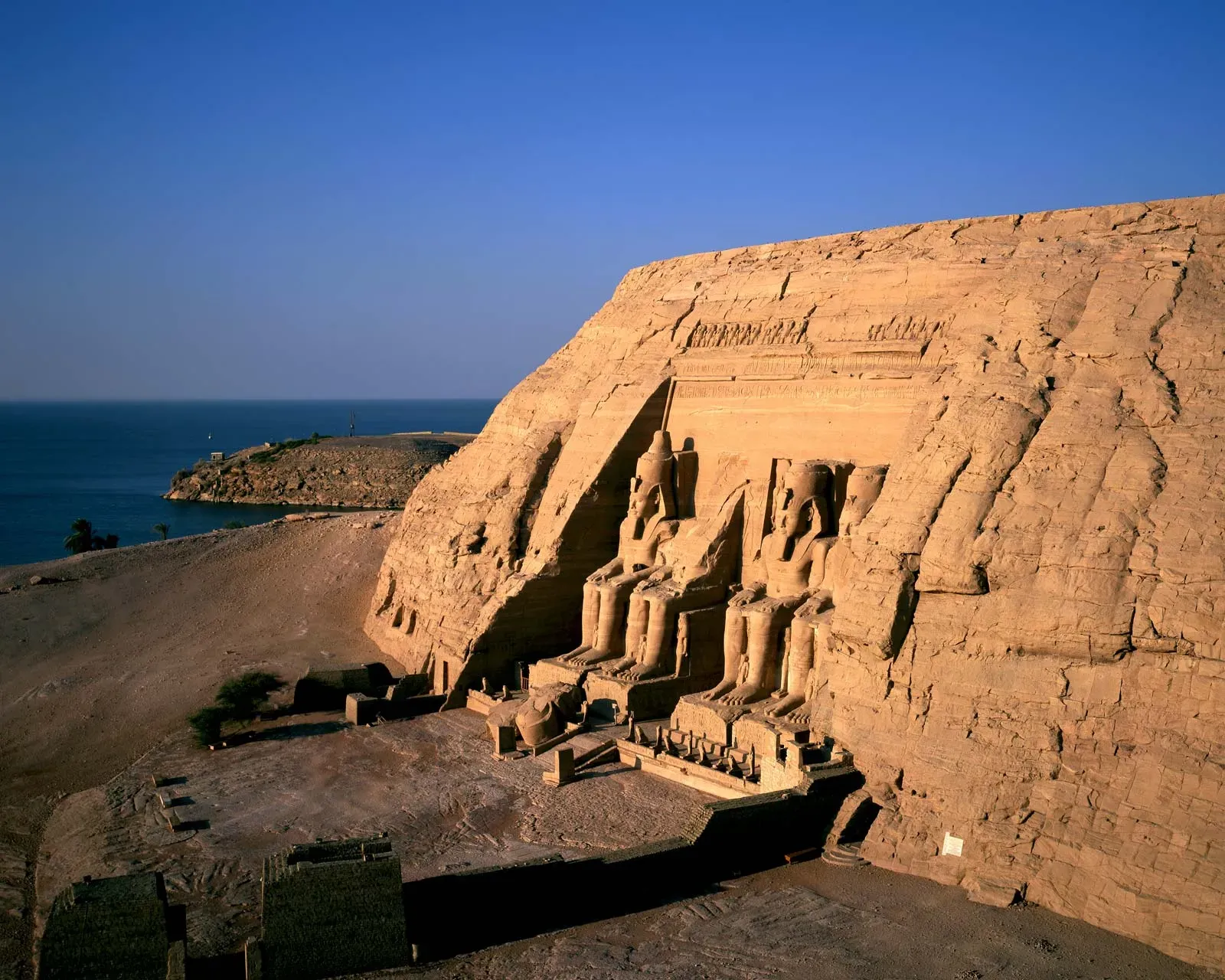
Iconic Facade:
Approaching the temple, visitors are immediately struck by the colossal statues guarding its entrance. Four massive figures of Ramses II, each standing at towering 20 meters in height, loom over the desert landscape. These statues were meticulously carved to resemble the pharaoh in all his glory, showcasing intricate details of his royal regalia and powerful visage.

Inner Sanctum:
Upon entering the temple, one is transported to an era of splendor and devotion. The grand hall is adorned with intricate wall carvings and hieroglyphics that depict scenes from Ramses II’s reign, detailing his military conquests and divine connections. The temple was dedicated to the gods Amun, Ra-Horakhty, and Ptah, further emphasizing Ramses II’s divine status.
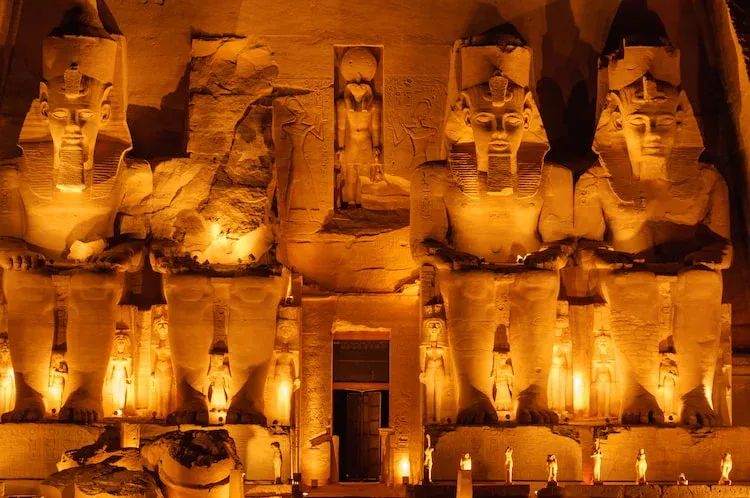
Solar Alignment Phenomenon:
One of the most remarkable aspects of the Temple of Ramses II is its solar alignment. Twice a year, on February 22nd and October 22nd, sunlight penetrates the temple’s inner sanctum and illuminates the statues of the gods seated at the back of the hall, leaving only the statue of Ptah, the god of darkness, in shadow. This awe-inspiring phenomenon is a testament to the advanced astronomical knowledge of ancient Egyptian architects.
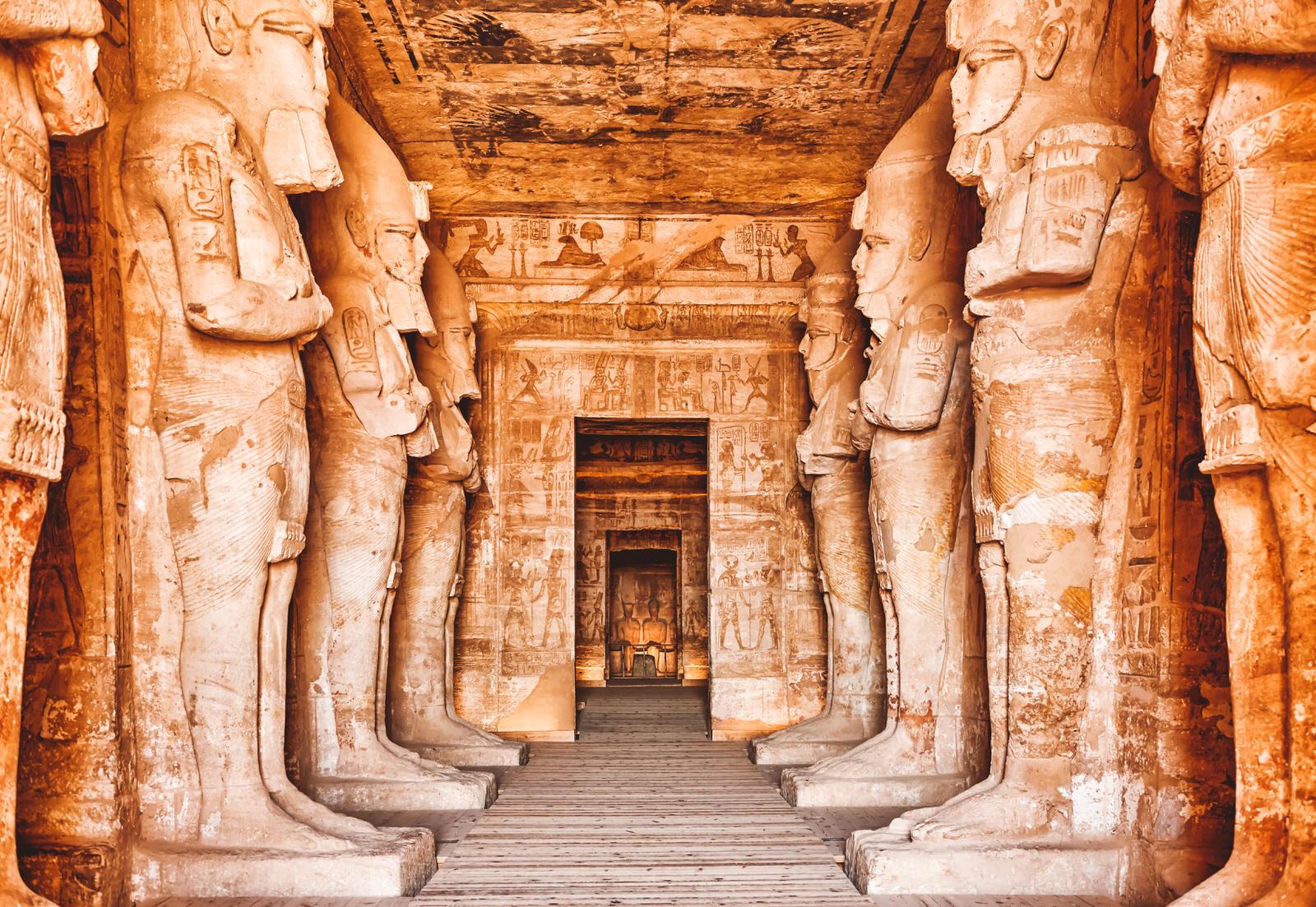
Rescue and Relocation:
In the 1960s, the construction of the Aswan High Dam posed a significant threat to the Temple of Ramses II, as it would have been submerged beneath the rising waters of Lake Nasser. In a remarkable international effort, the temple was meticulously dismantled and relocated to its current position, 65 meters higher and 200 meters back from its original location. This rescue mission preserved this cultural treasure for generations to come.
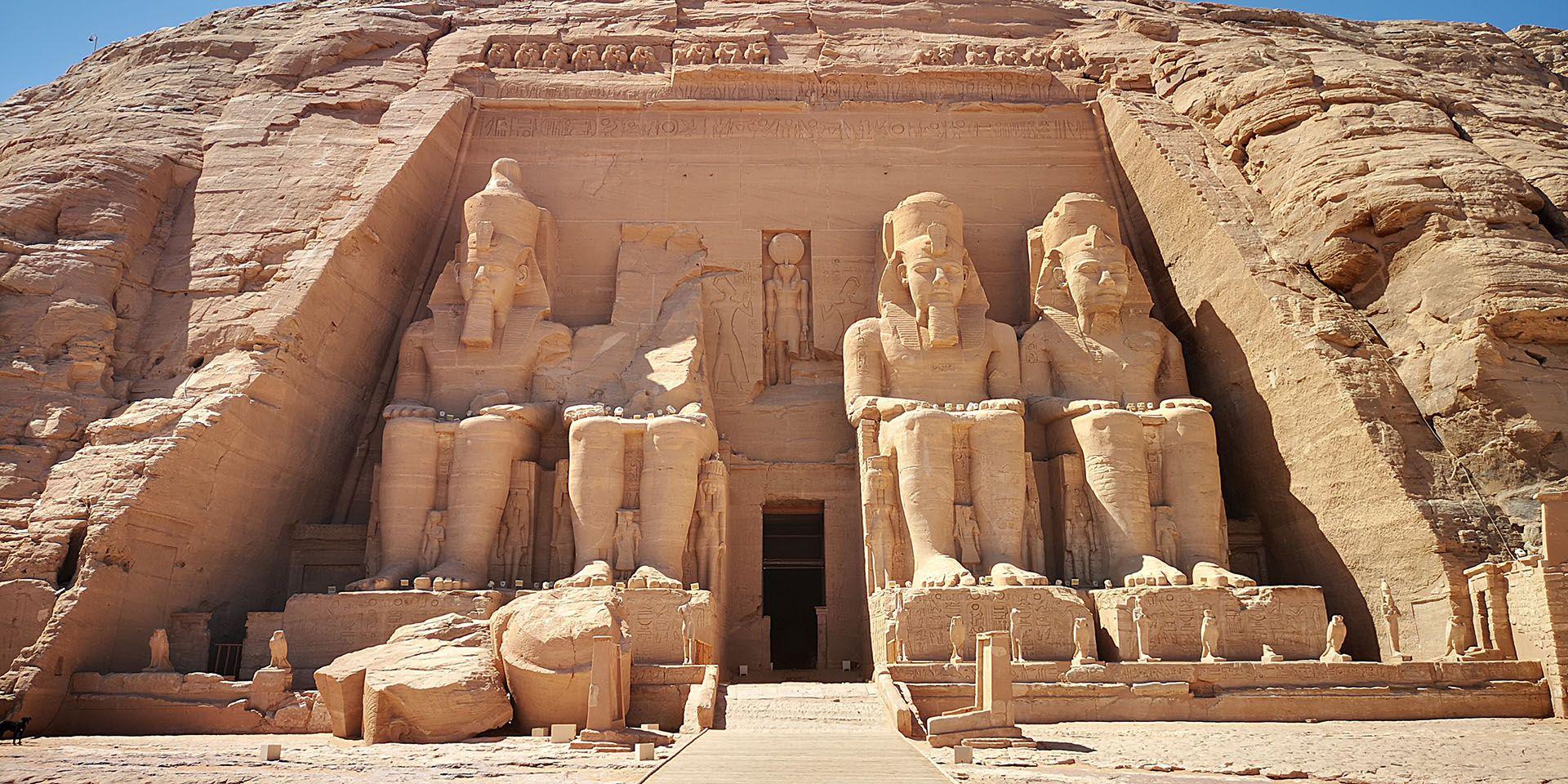
A Journey Worth Taking:
Exploring the Temple of Ramses II in Abu Simbel is not just a visit to a historical site; it’s a journey through time. It’s an opportunity to stand in the presence of one of Egypt’s greatest pharaohs and to marvel at the architectural prowess of ancient Egyptian civilization. With its rich history, stunning artistry, and the fascinating solar phenomenon, a visit to Abu Simbel is an unforgettable experience that should be on every traveler’s bucket list.

In the shadows of these colossal statues and within the hallowed halls of this magnificent temple, visitors can’t help but feel the weight of history and the enduring legacy of Ramses II, forever engraved into the sands of southern Egypt.




